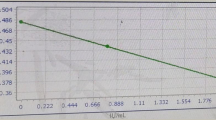Abstract
Activated partial thromboplastin time (aPTT) and prothrombin time (PT) are 2 major methods of screening patients for bleeding tendency. Heparin is an anticoagulant commonly used for various clinical conditions and will thus affect the coagulation profile. The influence of heparin on PT vs aPTT, seldom addressed in the past, should be carefully investigated. Prospective data on 35 patients who were heparinized for clinically indicated conditions were collected and analyzed for the change in PT (dPT) and aPTT (daPTT) at 3 time points after treatment, all of which were compared with baseline data checked before therapy. Age, sex, and the results of a complete blood count and liver and renal function tests were also evaluated for each patient to determine their effects on dPT and daPTT. The therapeutic goal of keeping the aPTT within a desirable range was achieved in ∼75% of patients by the last day of heparin therapy. Within this range, dPTs were not statistically significant, nor was the effect of age, sex, hemoglobin level, serum albumin level, white cell count, platelet count, or renal or hepatic function. In patients with thrombosis, dPT was not significantly influenced by heparin dose. During an overlap in the periods of coumadin and heparin administration, PT was used as a guide for adjusting the coumadin dose. The anticoagulant effect, indicated by a PT in the target range, would occur primarily secondary to coumadin administration and would make it relatively easy to decide when to discontinue heparin.
Similar content being viewed by others
References
Fourth ACCP Consensus Conference on Antithrombotic Therapy.Chest. 1995;108(4 suppl):225S-226S.
Bjork I, Jackson CM, Jornvall H. The active site of antithrombin: release of the same proteolytically cleaved form of the inhibitor from complexes with factor IXa, factor Xa, and thrombin.J Biol Chem. 1982;257:2406–2411.
Rosenberg RD. The heparin-antithrombin system: a natural anticoagulant mechanism. In: Colman RW, Hirsh J, Marder VJ, Salzman EW, eds.Hemostasis and Thrombosis: Basic Principles and Clinical Practice. 2nd ed. Philadelphia, Pa: JB Lippincott; 1987:1373–1392.
Triplett DA, Harms CS, Koepke JA. The effect of heparin on the aPTT.Am Soc Clin Pathol. 1978; 70:556–559.
Jiesh J, Levine MN. Low molecular weight heparin.Blood. 1992;79:1–17.
Hirsh J. Heparin.N Engl J Med. 1991;324:1565–1574.
Sandset PM, Bendz B, Hansen JB. Physiological function of tissue factor pathway inhibitor and interaction with heparins.Haemostasis. 2000;30(2 suppl):48–56.
Author information
Authors and Affiliations
Rights and permissions
About this article
Cite this article
Chen, CC., You, JY. & Ho, CH. The aPTT assay as a monitor of heparin anticoagulation efficacy in clinical settings. Adv Therapy 20, 231–236 (2003). https://doi.org/10.1007/BF02849851
Issue Date:
DOI: https://doi.org/10.1007/BF02849851




